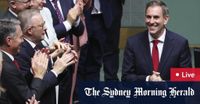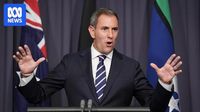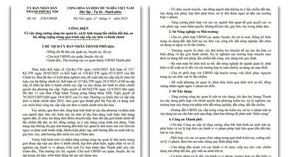The recent federal budget has unveiled a complex landscape for Australia's economy, outlining both encouraging forecasts and areas of contention, particularly in the realms of immigration and higher education.
This year’s budget predicts a decline in Net Overseas Migration (NOM), estimating a reduction of 75,000 in 2025/26 followed by an additional decrease of 35,000 in 2026/27. This decision comes amidst a backdrop where visa application charges are expected to yield substantial revenue, with projections indicating returns of $4.2 billion for 2025/26 and $4.4 billion for the following year. A notable aspect of the budget is the drastic increase in fees for international student visas; the cost has surged by 125%, moving from AUS$710 to AUS$1,600.
Luke Sheehy, the Chief Executive Officer at Universities Australia, remarked on the challenges presented in this budget: "This is a difficult budget to deliver at a difficult time for Australians." He acknowledged the government’s efforts to provide cost-of-living relief, noting it as a positive move for those enduring financial hardships, including university students. Sheehy stressed, however, that the budget was a “missed opportunity to build on the government’s good,” pointing to recent investments in the Universities Accord that demand further attention.
“Our funding system needs urgent attention – it’s time for the Job-ready Graduates Package to go,” he stated, criticizing the package for unfairly modifying student fees and decreasing funding to universities. He continued, emphasizing, “We need strong universities to deliver the skilled workers and the research and development that make our economy larger and more productive.” This sentiment captures much of the education sector’s concern regarding the approach taken in this year’s fiscal planning.
Yet, Sheehy maintained an optimistic outlook for the future. He mentioned that Australia is expected to educate a million extra students each year by 2050 and added that significant changes in funding priorities would be crucial to accommodate this growth. He argued for a reestablishment of the Education Investment Fund, increasingly spending on research and development, and a lift in the PhD stipend to support top talent.
Meanwhile, the Independent Tertiary Education Council Australia (ITECA) has echoed similar concerns, labeling the budget as lacking robust measures to bolster the education sector. ITECA noted that previous initiatives had not only failed to assuage public perception regarding international students but had also contributed to a growing resentment that painted them as a cause of local economic issues.
Felix Pirie, ITECA’s Chief Executive, voiced a clear critique, stating, “Australia has a reputation as a global leader in delivering high-quality education and training to international students. However, recent initiatives, including those announced in this budget, have decimated the sector.” He highlighted that international students represent the largest cohort of NOM and are significant contributors to the visa charges reshaped within the budget. Hence, the push for more regulatory support is seen as a necessity not just for economic growth, but also for preserving social cohesion and maintaining Australia’s global standing.
On a broader economic scale, the treasury appears to suggest a hopeful trajectory for the nation's economy, underpinning a narrative of a market poised for a 'soft landing'. According to Treasury forecasts, annual economic growth is set to improve, moving up from 1.5% this year to 2.25% next year, and ultimately reaching 2.75% in 2027. Wages are projected to rise faster than inflation, fostering optimism for households battered by years of rising costs.
The budget breakdown showcases an anticipated peak of the unemployment rate at 4.25%, which is a more favorable projection than previously forecasted. Moreover, inflation is expected to stabilize within the Reserve Bank’s target band of 2-3% by the middle of 2025, a development welcomed by both economists and households looking to rebound from high living costs.
Addressing these key indicators, the budget papers noted that inflationary pressures across various sectors are easing, with price growth in goods and services expected to moderate, providing further relief for Australian families. As disposable incomes are projected to rise, Northern Territory consumers will likely experience a gradual recovery in their spending power.
These forecasts of rising real household disposable income, projected to increase by around 8.75% by 2026/27 compared to 2023/24, suggest a return to better living conditions after fluctuating years of economic turmoil. This increased income, alongside anticipated growth in household consumption, with increases of 0.75% in 2024/25 rising to 2.25% in the two subsequent years, reflects the government’s foresight in dealing with ongoing economic challenges.
Nonetheless, the dichotomy within the budget concerning NOM raises pertinent questions. Past predictions have misestimated migration trends and adjustments made based on shifting demographic patterns signal potential future challenges. Recent data indicates an expectation of net overseas migration numbers hovering around 225,000 a year for 2026/27 to 2028/29, which underlines a pivot from earlier anticipations – both in terms of volume and economic benefit.
All in all, while the budget projects a balance between necessary fiscal responsibility and strategic growth, it ultimately reflects ongoing tensions between managing local resource demands and supporting vital revenue streams. As stakeholders in the education sector voice their concerns, the importance of a supportive framework for international students becomes all the more critical.






